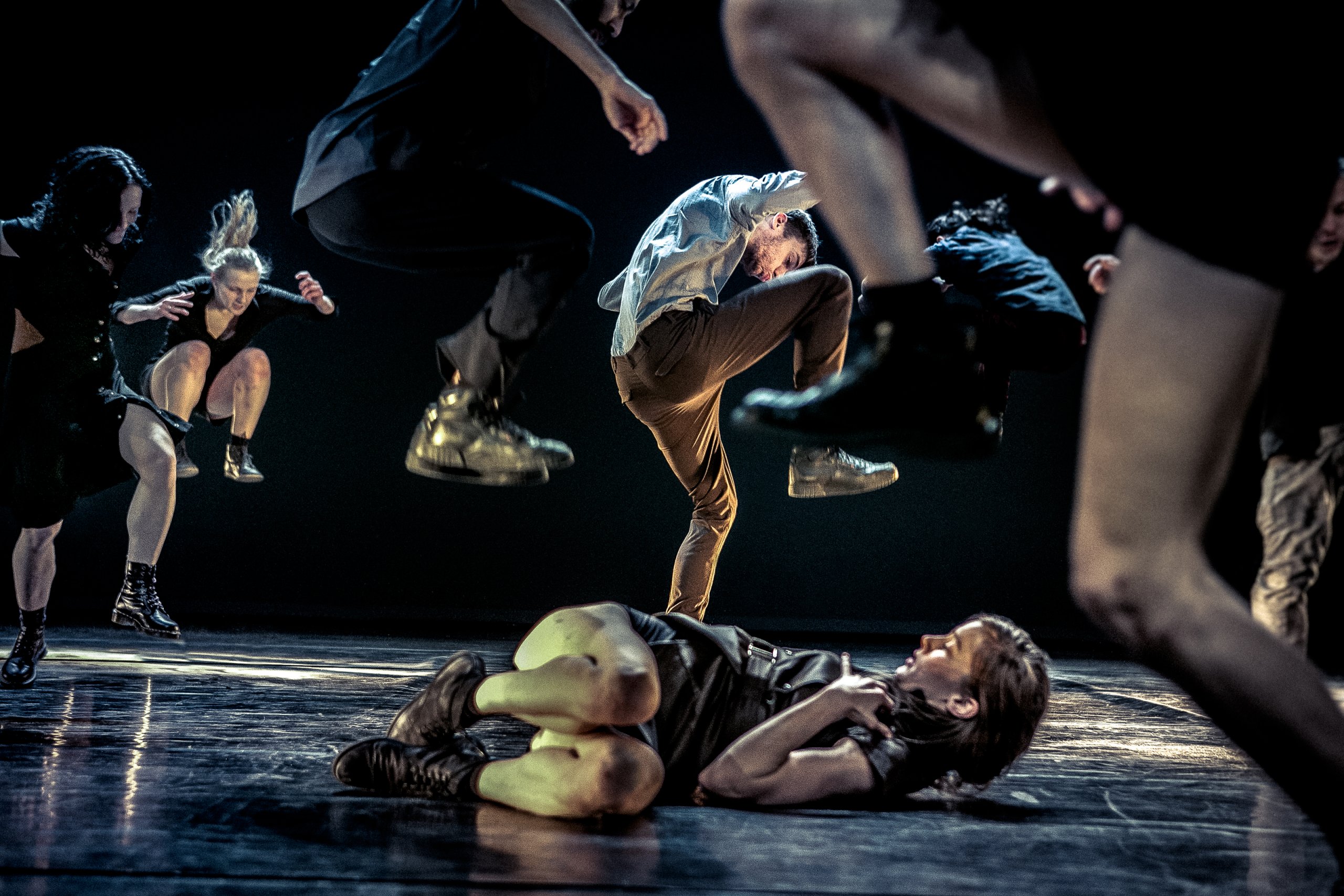
A performance of Ultima Vez’ ‘What the body does not remember’, a Dance Touring Partnership production
Reasons to work together
Membership of the Dance Touring Partnership has helped Warwick Arts Centre programme distinctive work and attract new audiences. Alan Rivett discusses the benefits and dangers of collaborative working.
In his article in July in AP Trevelyan Wright makes some great points about working together in a consortium. It’s no surprise that discussion about this subject is increasingly common, and not just in the arts but also more widely in the public service realm. As resources, both human and financial, diminish, pooling them and sharing learning is becoming a necessity and all too often the sense of “Why didn’t we do this before?” is palpable. There is also a tendency among stakeholders to actively encourage collective working for the common good, sometimes with healthy outcomes but in some cases leading to reluctance, disappointment and recrimination.
Warwick Arts Centre has been an inveterate joiner, convener and sometimes leader of consortia, both formal and informal, over many years. We do this for one reason: to enable our programme to be distinctive, stand out and provide access for audiences to great work that is seldom seen outside the world’s metropolises. This has led us to work with partners across the UK and Europe, bringing world music, circus, international theatre and dance to our stages.
Working and learning together has built confidence not only in programming but also in technical, marketing and participation approaches
Dance Touring Partnership (DTP) is a very good example of a consortium that demonstrates the benefits of collaboration. It now has a 15-year history of touring international contemporary dance to middle-scale venues. Its aims are clear and unambiguous: theatres working together to bring exciting and engaging international dance to audiences across the UK. A significant and principle objective of seeking high-quality work and bringing it to audiences new to dance has been maintained throughout. Since 2004, DTP has successfully toured 18 international contemporary dance productions, not only to its 11 core partner venues in England, Wales, Scotland and Northern Ireland, but to other venues joining tours as ‘guests’.
So how does this work in practice? The 11 DTP member venues are formally constituted as a limited company with charitable status to determine and govern the work of the partnership. The partnership meets quarterly and is attended by senior venue staff with programming responsibilities who are able to commit their programming resources. Key responsibilities of the company are programme selection, fundraising, oversight of tour production, partnership governance and finance. All of the day-to-day activity is undertaken by a small, specialised team of freelance staff. DTP has no ‘central office’, no full-time staff and no core funding so it needs to be fleet of foot, lean and wholly focused on its core mission.
The benefits of working together are manifold. Over the last three years alone DTP has produced four tours experienced by 34,000 people in 14 cities. 34% of the audience were under 25 and 20% were new to contemporary dance. All the tours visited venues where contemporary dance is rare or entirely new to audiences. Over 600 young people with no or little experience of contemporary dance took part in associated workshop activities led by 40 UK dance artists employed to lead the activities.
These are the recent headlines and confirm a pattern of success over 15 years of reporting, but some of the associated benefits are also significant. Working together as a partnership dedicated to incoming international touring has led to a significant increase over time in the amount of UK contemporary dance programmed across the country by partner venues to the obvious benefit of UK dance companies and audiences. Working and learning together has built confidence not only in programming but also in technical, marketing and participation approaches where DTP regularly brings together the relevant staff from the venues to share and develop new ideas. International ‘go and see’ visits have exposed partnership members to other ways of working across Europe, Australia and other nations, enabling other cross-border collaborations to emerge.
There are also dangers to be aware of. One is ‘Groupthink’. Are members simply confirming a like-minded bias for familiar forms of cultural expression to the exclusion of the unfamiliar or culturally diverse? Will this play out as a ‘same old same old’ programme for audiences to the exclusion of other cultures? Another is the alienation of UK-based dance practitioners. Does the preoccupation with international dance touring alter the relationship with UK dance companies and what do we do to guard against this? Can the mission be achieved when the people change? The only safeguards are constant vigilance to the associated risks and good communication between partners.
Warwick Arts Centre will continue to work collaboratively for the benefit of our audiences and the distinction we hold precious in our programme. It is not for everyone and each to their own context, programme, audience and finance, business and outlook. Partnership and consortium-working is no magic bullet but for us it works.
Alan Rivett is Director of Warwick Arts Centre.
www.warwickartscentre.co.uk
Join the Discussion
You must be logged in to post a comment.